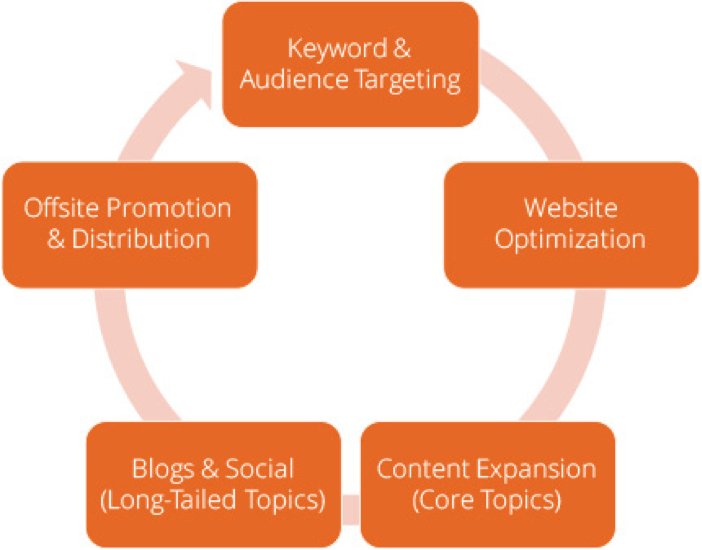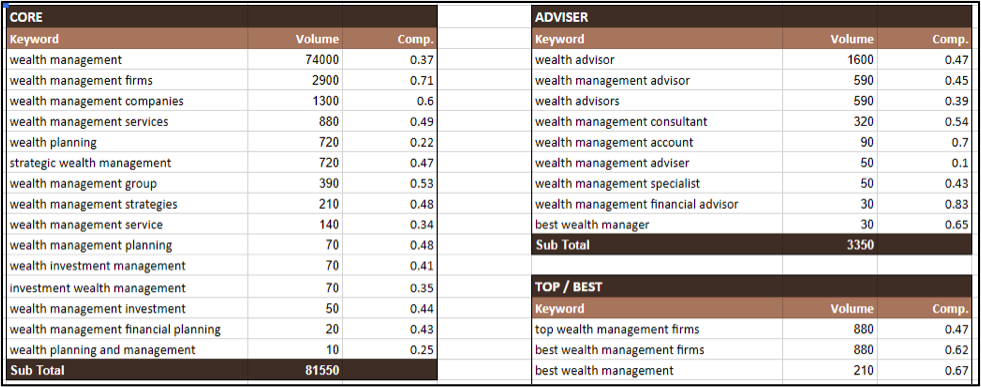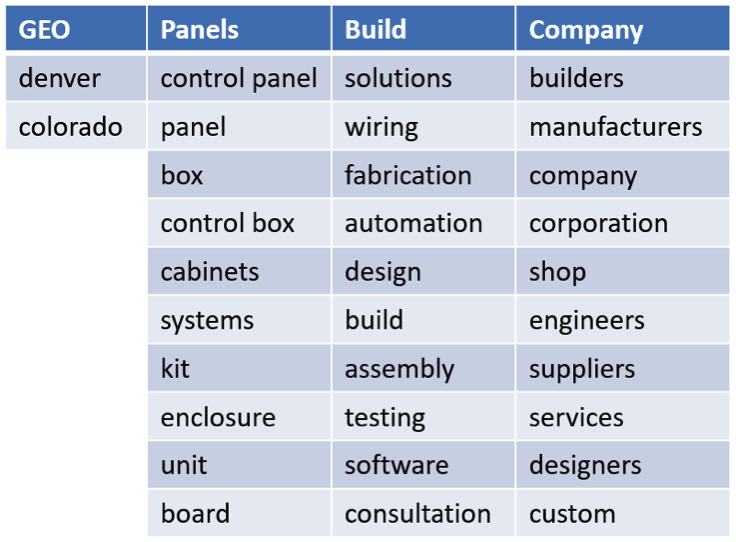Introduction: A Proven Approach to Doing Effective SEO
Search Engine Optimization (SEO) is one of the most misunderstood, but powerful digital marketing channels in existence. The potential with SEO is that more so than any other channel, you can leverage it to attract new business and leads to your website. When SEO is done right, it can help you drive new customers who haven’t yet discovered you or what you do, which is a very powerful thing.
Of course, as with any modern digital marketing channel, SEO can get quite complicated. The days are long gone of doing some simple optimization and hoping Google will rank your site. This is why we believe it is so crucial to take a strategic, integrated approach to any SEO program. If the SEO strategy is not well thought-out, or if it does not integrate with the broader marketing function, it is bound to fail.
In this series of posts, we will outline the basic theory behind magnetika’s time-tested, proven approach to doing SEO. We believe that developing new organic traffic channels is one of best ways to attract new customers to your business; this post will help outline how to do so in a way that drives meaningful results.
In Part 1, we review the most important foundational elements of SEO: audience research and on-site optimization.
In Part 2, we will explore how to develop quality, useful content and promote it online to drive attract lasting results and long-term SEO equity.
This simple outline shows the basic steps of how to use SEO to attract new business. We’ll explore each step below.
![]()

![]()
Step #1 – Defining Your Audience & Their Search Behavior
All good marketing starts with a solid understanding of your target audience. SEO is no different. Before ever doing anything SEO-related, it is crucial to ask some basic questions about your audience, such as:
-
Who are my core audience groups today?
-
What sort of things are they interested in?
-
How do these people find my business?
Getting the answers to these questions can help inform all of the SEO work to come and helps ensure we always maintain an audience-first focus.
With those answers in hand, we can then start to think about the online-specific search behaviors of our audience. At its core, this is trying to answer one basic question, “What is my audience searching for online?”
There are many general ways to answer this question, and at a conceptual level it is important to do so. However, it is also useful to apply some real-life data to help us understand the ins and outs of our audiences’ search behavior.
Here are a few ways we do this:
Keyword Research: SEO keyword research is the process of using data tools (such as SEMRush, Google Keyword Planner, or others) to get real-time information about the types, quantity, frequency, and competitiveness of the keywords that searchers look for online. By conducting thorough keyword research, we can provide a data-backed set of information about the specific search queries users are typing into find a business like ours.
![]()

ABOVE: A sample look at some keyword research for a wealth management firm. Building comprehensive lists and categories like this can help leave no stone uncovered in terms of understanding how people search.
![]()
Topical Outlining: Of course, users search in more nuanced ways than just by keywords, and so does Google. That is why in addition to looking at specific keywords, we believe it is also crucial to outline the core topics that users care about. By understanding the broad categories and subcategories of content topics that our audience is looking for, it can greatly inform what sort of content we put on the website.
![]()

ABOVE: Sometimes building a keyword cluster can highlight the major topical areas to consider, such as with this outline for a local custom wiring and electrical panel shop.
![]()
Current SEO Presence: Finally, it is also worthwhile to review the current SEO presence of the site. If we do very well for a few keywords or topics today, we want to leverage those opportunities. Conversely, if we don’t even show up on the map for some topics, we know where to begin. Tools like Google Search Console can greatly help outline a site’s current SEO performance.
Section Summary: SEO attraction starts with a keen understanding of the target audience and their search behavior online. We can use real-life data to understand the keyword queries and topics that users are most interested in.
![]()
Step #2 – Optimizing Your Existing Content
With a solid understanding of our audience in hand, one of the best low hanging fruit tasks we can do is to optimize our existing website for the keywords used by that audience. In the old days, this was about all you needed to do for solid SEO, but today, this is just a good starting point.
There are many subtleties and details involved with optimizing existing content, but the basic goal is ensure that the current content we have on the website is supportive of the terms and queries that users are searching for. Think of it this way: If your website doesn’t even mention the key items users are searching for, why would Google ever show you for those searches?
The best ways to optimize existing content fall into three major categories:
1. Keyword Mapping
We believe that all of the major keywords and search topics our audience cares about ought to be ‘mapped’ to individual pages on the website. Or, to put it another way, we ought to ‘map’ each core keyword (and its variations) to specific pages on the website for which we want that term to rank. This map can help guide all content efforts on the page.
2. Page Titles & Meta Descriptions
With our mapping in hand, we can then work on two of the most important content elements on the page for organic search: the page titles and meta descriptions. These are still some of the easiest SEO-specific sections to optimize, and they also show up in search results. Therefore, it is always a good idea to ensure that your metadata is not only optimized for Google, but also, presents a clear and compelling message to searchers.
3. On-Page Optimization
Next, we want to ensure that the written content on the site itself actually contains the keywords and topics for which we hope they will rank. There are a few ways to achieve this. Sometimes it is a simple as doing some very light massaging and editing of the content, whereas other times we may need to add new content to an existing page to make sure it is robust enough for the mapped topics.
![]()

ABOVE: An example of how a properly mapped keyword set and page title can look.
![]()
One final note about on-page optimization: No matter how we end up optimizing content, we always want to ensure we keep an audience-first mentality with regard to the pages. That is, we never want to force optimization in an unnatural or awkward way. We should always be striving to get the content to align with the audience and their needs.
Section Summary: Once we know how searchers are looking for us, it is important to optimize our website to ensure it is adequately supportive of the keywords and topics searchers are looking for. We need to ensure our content is properly optimized for what people care about.
![]()
Step #2 (cont) – Technical Website Optimization
Another type of website optimization is technical SEO. Technical SEO is the process of reviewing the site from a Google bot perspective. That is, we want to ensure that there is nothing on the site, technically-speaking, which would prevent Google from fully crawling or understanding your content.
Technical SEO is a very crucial part of optimizing your website because without it, we might be harming our organic potential without ever realizing it. That is why one of the first things we do with any new client is put their site through a rigorous, 40+ element best practice checklist to search for any problematic items.
A few sample questions we ask ourselves with regard to technical SEO are things like:
-
Is my website friendly to mobile users?
-
Is my website fast?
-
Has Google properly indexed all my content?
-
Do I have anything found by Google that I don’t want exposed?
-
Do I have duplicate content issues of any kind?
-
Has my site ever gone through a penalty or manual action of some kind?
A comprehensive technical review can help address all those issues and much more.
Section Summary: The final step to on-site optimization is to ensure that there is nothing harming the technical health of your domain. Google loves healthy sites, so it is a good idea to strive to be as clean as possible.
![]()
Understanding Your Target Audience Goes a Long Way
One of the most effective ways to start the SEO process on your website is to cover the basics. To us, that means starting out with a keen understanding of the target audience and what they search for. With this knowledge in hand, we can then move to optimize our website from both a content and a technical perspective. These two steps are at the core of any effective SEO program.
In Part 2 of this blog, we’ll explore not only how to develop new content on the website, but also, how to effectively promote all that you have done once that process is complete. Stay tuned.



